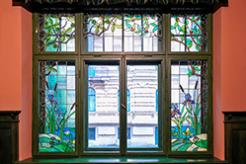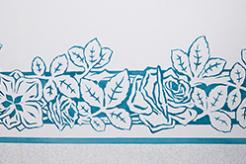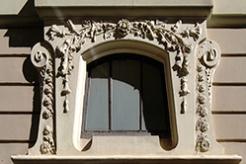




Author: Agrita Tipāne, Dr. arch.
During Art Nouveau period, nature became the source of artistic research and inspiration. At the end of the 19th century, scientists carried out a number of important studies in natural science; new species were discovered, and the theory of evolution was developed, all of which deepened the overall public interest in the nature, and many writers, painters, and artists addressed this subject in their work. The German biologist, natural scientist, and philosopher Ernst Haeckel, who has discovered several new species, was using microscope in his studies of monads; and he was surprised at their artistic appearance (Fig. 1). Several dozen books by Haeckel were published between 1899 and 1904, containing drawings of natural elements which resembled rich ornaments. The compilation of Haeckel’s work ”Kunstformen der Natur” was published on 1904, and it was a real breakthrough in the world of art. The drawings inspired many artists to immerse into studies of nature and its components. Ernst Haeckel was also the first to start using the term ecology (the science that studies the interaction between the environment and the organisms) back in 1866. Haeckel’s drawings inspired many distinguished masters of Art Nouveau, such as Hans Christiansen, Hendrik Petrus Berlage, Emile Galle, and others.
Interest about nature, which began at the end of the 19th century, continued into the 20th century, manifesting itself in the works of many Art Nouveau artists. Teresa Sala, art historian: “At the beginning of the 20th century, the pioneers of the Art Nouveau movement endeavoured to develop a new language of decorative forms, deriving inspiration from the nature and its lines and forms. Nature became a temple which provided inspiration through symbolic expression.” Nature also spoke to the poets of the time; and Charles Baudelair wrote is his collection of poems “The Flowers of Evil” that nature is a temple where each living thing has been created. Nature has also been eulogized in the Latvian poetry, and remarkable poets such as Rainis, Aspazija, Fricis Barda, Vilis Pludonis and others have repeatedly poetized nature in their verses. The first chapter of the collection of poems “In the Land of Potrimp”, issued in 1913, is named “Nature and Soul”, and it berhymes the beauty of nature in Latvia. This collection is also an enchanting piece of publishing and art with exquisite graphics by artist Burkards Dzenis (1879–1966), who used stylized nature elements such as spruce trees, sea waves, sky with clouds, and others (Fig. 2).
The tendencies of poetizing and glorifying the nature, profusely found in literature of the time, became apparent in architecture and fine arts, too. Artists were most often inspired by various plants. In Art Nouveau period, each item was to become a piece of art, therefore, plant motifs were widely used in decoration. In order to endow artistic properties to plants, they were stylized in the manner characteristic to Art Nouveau. The stems of flowers were represented by supple, convex lines, complemented with leaves which were either exaggeratedly geometric or natural. The main accent of such compositions was blossoms, the stylization of which often formed an ornamental decoration. Caulescent plants, trees, and bushes also got stylized – they were popular not only as interior and exterior decoration of buildings, but also of various smaller objects. Plant elements often carried a symbolic notion, thereby emphasizing the meaning of each object as well as its connection with the surrounding environment.
More information will be available in the virtual exhibition, which will be established till April 2016.